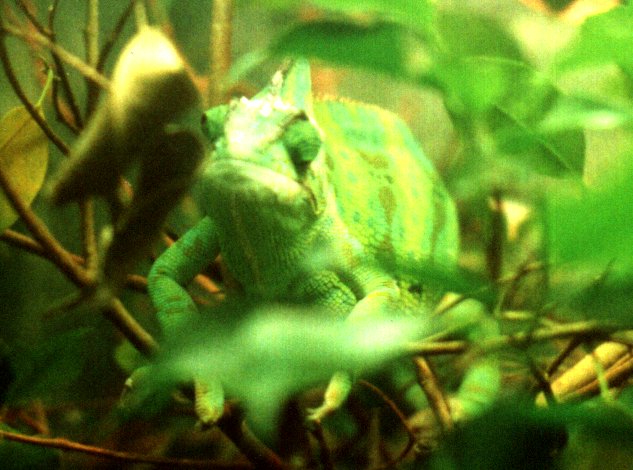

Chamaeleo calyptratus
Veiled chameleons live in the western coast of Yemen and the southwestern coast of Saudi Arabia. Males are generally green, striped with yellow and brown, while females are more green with yellow spots and can produce blue and white markings (as in our picture, above). Each eye can swivel 180 degrees and point in two different directions at once. (In our picture, her right eye looks forward, and her left eye backwards.) They can sit still for long periods waiting for prey to come near. When they finally move, they do it slowly and cautiously, rocking their body from side to side like a leaf fluttering in the wind. Males have higher helmet-like casques than those of their female counterparts (casque = "kalyptra" in Greek, which is where the species takes its name from.) Their casques may be used to collect dew. They feed on insects, even flying ones, which they catch with their long extendible tongue; but in captivity they also enjoy banana, lettuce, spinach and other relatively soft vegetation. When kept in captivity they should be housed alone in a cage (not even in visual contact with each other), because they tend to act agressively against other chameleons.
The above picture was taken at Columbus zoo, in August 2002.
Subgenus Chamaeleo
Genus Chamaeleo
Family Chamaeleonidae
Infraorder Iguania
Suborder Sauria
Order Squamata
Class Reptilia
Subphylum Vertebrata
Phylum Chordata
Kingdom Animalia
Life on Earth
Index